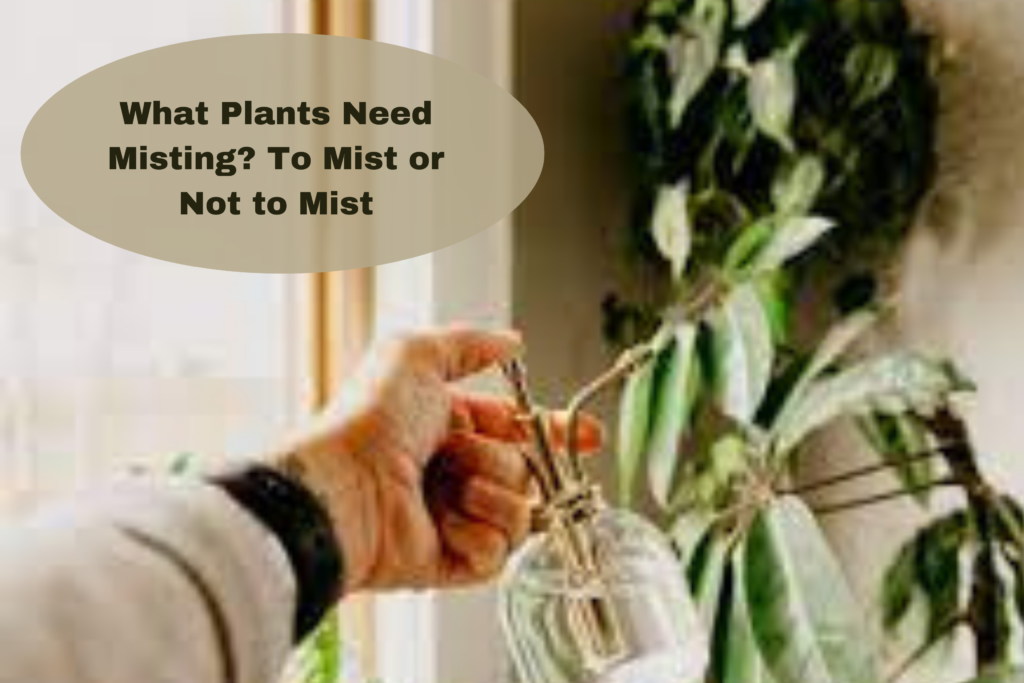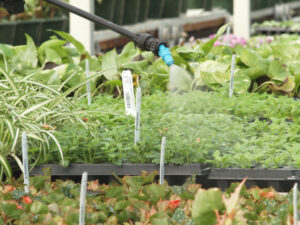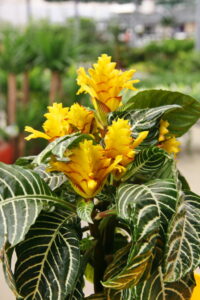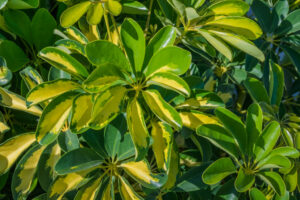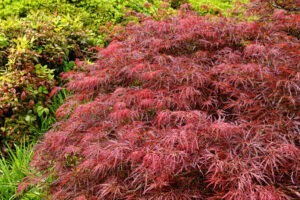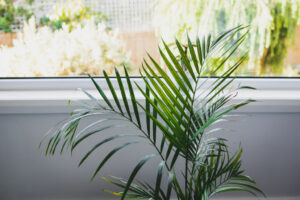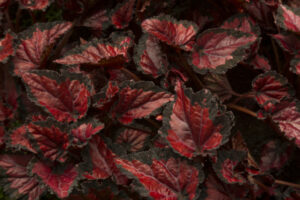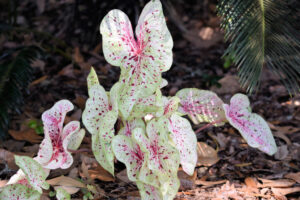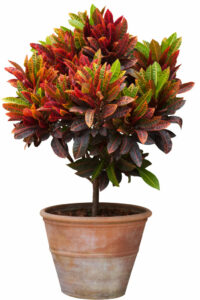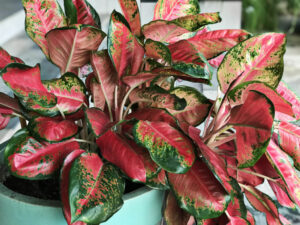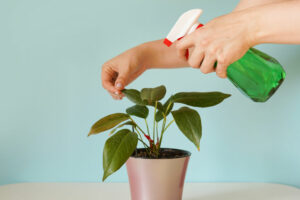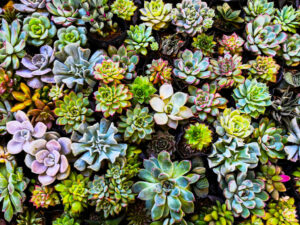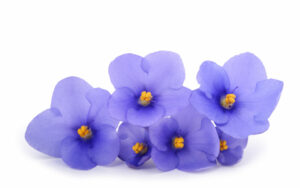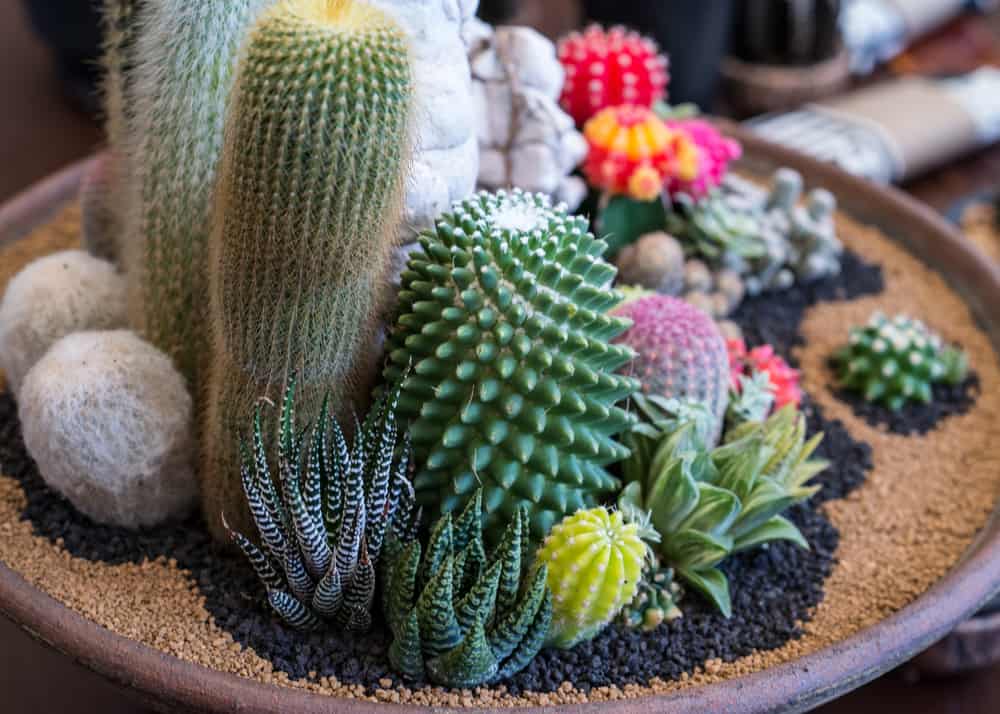HousePlantJoy is supported by our audience. When you purchase through one of our links, we may earn a small affiliate commission. As an Amazon Associate I earn from qualifying purchases. Your cost is not affected.
==================
What House Plants Need Misting? Should You Mist Your Houseplants?
Humidity has a crucial role to the development of your houseplants and for this to acquire, you need to mist your houseplants. Misting is also part of watering but it only gives a light quantity of water for your plants to support their growth. Some houseplants that need misting are plants native to tropical regions and require lots of humidity. However not all of your houseplants at home need misting, some of them are way sensitive to it and can damage your plants in the long-run.
In this article, we’ll discuss how to mist plants, some houseplants that need misting, what houseplants don’t like to misted including their preferred habitats. Also we wil convey how often you need to spray these indoor plants to keep them happy and healthy. Let’s get started!
What Houseplants Need Misting?
Possibly, you’ve heard that plants need misting. Misting is a way where plants are sprayed by light water using a spray bottle or hose. Through this, it creates certain moisture for the plants. And with about 391,000 plants recognized by science, there’s a huge difference between taking care of them.
As a gardener, we must know our plants’ distinct characteristics first. Such as their require temperature, sunlight, right type of soil, fertilizer and most especially in watering for it does not need misting or moisture.
Some of the houseplants are way sensitive with just a light humidity in their space that causes damage. And now makes you question whether yours requires special care. But worry less as we will answer everything in your mind along the way. As houseplants have a lot of variation and different maintenance. Misting is crucial to houseplants that need it. Additionally, here are some of the houseplants that need misting.
Top 8 House Plants Need Misting
1. Zebra Plant
If you happen to have a zebra plant, you will need to spray it. In Brazil’s Atlantic Forestfind in the Atlantic Forest of Brazil, you can find the Zebra Plant. The place is known for growing other tropical plants. Its white stripes against a dark green ground give the enormous triangular leaves a zebra-like appearance. The golden blossoms of zebra plants add up to their beauty.
Like other tropical plants, zebra plants love high humidity ranging from 40-80 percent. So misting this plant regularly is very important. While misting zebra plants, be careful not to get the blossoms wet. And showering the leaves too much may create illnesses in the roots of the zebra plant.
2. Umbrella Dwarf Plant
Another plant that needs misting is the umbrella tree. Dwarf umbrella tree increases its humidity level when being mist more. This plant repels spider mites, which are drawn to it. They’ll try to get in and eat your wonderful houseplant whenever they get the chance, but water will drive them away. Then get into the habit of misting on a regular basis.
Additionally, the dwarf umbrella tree is not sensitive to its water intake. It can tolerate drought and also grow with neglect of water. However, even if this plant can tolerate drought, water is still important for it to grow and not to dry up along with its leaves when not water properly.
Aside from this, the dwarf umbrella also loves plenty of moisture. And misting it with warm water every two days is advisable. In addition, watering dwarf umbrella plants with filtered water or distilled water prevents us from leaving deposits every time we mist.
3. Laceleaf
Some of the longest-lasting flowers on earth are the Anthurium with its dazzling color. It can even last for a couple of months. Laceleaf also signifies hospitality. While the crimson leaf-like appendage and a green or yellow stem emerge from the laceleaf, inspiring joy and prosperity. Depending on the species you chose, the plant might have different colors. Even the plant’s aerial roots, even if it eaves, benefit from frequent sprinkling.
The Laceleaf plant needs misting during once per week. Especially on the colder months, even if happen to be inside. When the weather tends to be warmer, spray the laceleaf more often every week. Plus, as it loves a moist climate, you can mist it every day. Use a humidifier or pebble tray when the air tends to be dried to add some moisture during the winter season.
4. Indoor Palm Trees
When you happen to have some inside palms, you may always feel near a sandy beach. Indoor palm trees are one of the houseplants that need misting. In misting your indoor palms, make sure you fertilized them. Also make sure you water them as required, and give them just enough light. Keep them at bay with a mist to avoid the spider mites
Further, as your indoor palm tree likes average household moisture it is best to mist it frequently and place its pot in a pebble tray or use a humidifier for additional humidity. Likewise, it prefers 60-80°F room temperatures. Misting indoor palm can also help to prevent pests in your plants.
5. Begonia
Houseplants like Begonia are common. Like the other plants on this list, Begonias thrives in a humid, hot climate They may, however, survive in both tropical and subtropical environments. Some begonias may withstand cooler temperatures depending on the variety, and these are usually grown indoors.
So before you start misting your Begonia, be sure to verify which species you have, as there are a lot of begonias species. However, if you have Rex begonias, too much spraying of water might develop mildew into it. In such a case, you should utilize a humidifier in the room or a pebble tray containing your rex begonias to add humidity as it is like a room or space with high relative moisture. Also, take note that Rex begonias don’t like their foliage to be watered so avoid this when misting.
6. Caladiums
Caladiums are beautiful foliage plants. It contains bright color leaves that are not cold-resistant. It thrives in areas with cold winters. Placing it in pots makes it easier to move the plants indoors when it gets cold. Therefore, caladiums are difficult to grow as indoor plants since they require a lot of humidity.
The Caladium plant needs a regular misting. Also, be sure that your home temperature ranges from 65-80°F to avoid sudden changes to your plant.
Additionally, Caladium likes to place underneath a saucer filled with water and rocks as we know that it adds some moisture to it. You may also modify your thermostat if you’re not at home by turning it up. If that doesn’t make an option, misting the Caladium works just well, or you can use a humidifier.
7. Croton
Due to its colorful, variegated leaves, the Croton houseplant is sometimes referred to as “Bush on Fire.” Croton’s tropical nature makes cultivating more challenging than your typical low-maintenance houseplant.
Tropical areas are humid, and croton foliage is a houseplant that needs misting a few times a week or even once a day. Maintaining the ideal moisture level through misting helps and supports healthy foliage. To enhance the humidity around your plant and in your space, you can use a pebble tray. You can put your plant pots or a humidifier to add some moisture to your space. Also, you might as well put it in place with bright sunlight to motivate the development of its leaves.
8. Red Chinese Evergreen
The Red Chinese Evergreen plant is a full-bodied, resilient plant that adds color to any space. Lush, red-accented leaves give flair to the cape of your favorite table without requiring much maintenance on a daily basis. The Chinese evergreen thrives in both water and soil. If it’s in the ground, make sure it’s well-watered before soaking it again.
Frequent misting of tepid water on the leaves of Chinese Evergreen plants helps to hydrate them and increase humidity levels when your home’s air is arid. Even though it can tolerate dry air, it still likes rooms or spaces with high moisture. It is also best to keep it in a room temperature range from 65-80°F.
How Do You Mist A Plant?
Misting is crucial to houseplants that need misting and love humidity. As it brings moisture to them, and the best examples of it are the tropical and subtropical plants. This helps them to have new growth and foliage. Similarly, they usually do well in a place with 30 to 40% of humidity, so tropical plants must be misty.
Nonetheless, this does not apply to all plant types as some are not good for misting. Opposite to the positive effect in tropical plants, plants that don’t like too much water experience fast rotting. Making it mouldy film and diseases which are not nice for your plant. So, it is essential to know your plant characteristics first before proceeding and how much water or mist they should have.
Tips on how to properly mist plants
- In misting or spraying your plant, take note that you can use neutral water. And the best time to mist plants is every morning to give them a break and allow them to rest throughout the day.
- When misting plants, remember that you have to spray it on the top of the leaves first and next is the undersides of the leaves. After this, the houseplant should look like there has been light moisture.
- Also, note that not all houseplants can be misted daily. Some of them just need to be mist once or twice a week.
- Always protect humidity-loving plants away from any doors, windows, drafts, heating and air-conditioning ducts.
Is it better to mist or water plants?
We are all aware that watering our plants is essential for their survival, growth, and health. It’s also one of the plant’s energizers, which helps it stay robust and avoid withering. We do know, however, that too much water has a long-term negative impact on our plants. Additionally, this causes leaf color to shift. Spotting, root rot, moldy film formation, and illnesses or bugs that affect your houseplants are examples. This is the predicament that every gardener seeks to avoid, and misting tries to aid by spraying a small amount of water to the plant’s bottom.
With misting you can now control the watering of your plants and avoid giving excess water to your houseplants. Likewise, you can prevent disasters in the long run. The best way to practice is to make your houseplants wonderful and healthy.
For houseplants that need misting, spray little water through a mister, spray bottle and hose to provide humidity to plants native to tropical regions.
But keep in mind that not all houseplants require spraying and prefer moisture. Some, particularly those with fuzzy leaves, are sensitive to excess water and misting, which can cause their leaves to curl and collect water, which can attract bugs and rot. However, whether it be a tropical plant or not, excessive watering of plants is critical to their health, so make sure to water them just as needed.
What houseplants should not be misted?
Some plants don’t need so much water and require misting as it can affect and deteriorate their health over time. Here are some of the houseplants that misting is not advisable.
1. Succulent
Typically succulents grow well in arid environments but remember that not all succulents are cactus. If we try to mist them, it will lead to humidity changes around them. Also, when a succulent is already full thrived, they don’t want to be misted. If misted, this can result in the rotting of roots.
2. Cacti
In cacti, misting has an exception, especially for the moisture-loving cacti, which is the tropical cacti such as Rhipsalis, epiphyllum, and Thanksgiving cactus. This plant doesn’t want to dry out fully and likes to have at least some right amount of misting to its base to moisten them.
For the moisture-loving cactus, you have to mist them at least once a week before starting your normal watering. Also, keep in mind not to directly mist the plant leaves during the winter season to prevent the presence of diseases like oedema.
However, for the desert cactus, it is not. As it is sensitive to too much humidity and affects its overall health.
Here are the possible outcomes when you mist your desert cacti not according to its preference.
-
Rotting of stem
Misting can cause stem rot on cacti. Too much humidity affects the stem of the cacti so misting is not advisable as it can lead to rotting of the stem. In addition, the excess water absorbed by its pores will build up in its stem and lead to the disruption and rot of its water-storage cells. As you will know, cactus and succulents have water in their stem and leaves for about 90-95%. In line with this, if misting is excessive, it will rupture water-storing cells and rot afterwards.
-
Pests And Diseases
Misting cactus, especially at night, is also not advisable as it encourages bacterial growth, fungal diseases, molds to grow in the plant. Excess moisture in the cactus stem will result in edema. Some signs of this disease are bumps and blotches. Additionally, extra moisture from the misting affects the topsoil, permitting the thriving of bacteria and algae that affect the roots and lures pests to lay their eggs and damage the roots of the plants.
-
Poor Root Growth
Too much misting of cactus also leads to the poor development of roots as it has some difficulty reaching all the roots. For this not to happen, just only moistened the topsoil. Cactus has wide lateral roots and long taproots, and it prefers deep watering where the entire potting medium is saturated with water. Without sufficient moisture to absorb, roots will become dry and brittle.
-
Dehydration
There’s a huge difference between watering and misting. So don’t rely on just one, as misting gives only a small amount of water that can’t suffice the plant’s needs, eventually leading to dehydration. This possibly occurs in misting as it cannot reach the bottom roots of the plants.
Similarly, don’t be overconfident that a cactus can survive because it can store water on its own and support itself for the long run. This can also consume and lead to starvation and afterwards show signs of weakness.
3. African Violets
Despite the likelihood of high ambient moisture, they don’t normally like to be misted, especially on their leaves. In addition, if you want to avoid misting the leaves, it is best to mist the plants from the bottom. As this plant has its fuzzy leaves, water on its leafage can lead to rot and fungal spots. However, if you think it needs to be misted, make sure that the humidity in your space is below 30% and doing this, please have some precautions that too much can affect your plant’s health.
If your home doesn’t provide the needed humidity of African Violets ranging from 60-80%, you can use a humidifying tray or electric humidifier if you have an extra budget. However, always remember not to use a plant sprayer and let the leaves wet.
How often do Plants Need Misting?
The regularity with which you should water your plants will impact how dry your home’s air is.. You’ll need to mist and water your plants more often if you use your heating or cooling most of the time. You may need to spray a few times throughout the day and night if the mist evaporates in an hour or two. However, you can use a humidifier to add some moisture to your space and a pebble tray for your plants’ pot to gain extra humidity.
Plants’ needs for misting are based on the plant’s habitat, so be sure to take note of this. Some of them like twice a week or regular misting and some are not. Examples of these are Zebra plant and Caladiums, which loves misting regularly, and Croton, who likes once a day or a few times a week of misting. Remember that misting can help tropical plants who love moisture but keep in mind that they have distinct characteristics that are different from each other.
Benefits of Misting Plants
The plants in our home are largely from the tropics, which have high humidity levels. In contrast, the air in our homes is frequently dry. Misting houseplants to improve humidity is a simple and effective method. Misting your plants might also help you avoid overwatering them. Finally, pay attention to the color and texture of the leaves on your plant. Plants with brown or dry leaf tips benefit from regular spraying.
-
Misting improves Humidity
Misting our plants helps them have some extra moisture and avoid them withered. But misting lasts for a bit of time, so it cannot guarantee full humidity all day. It will eventually evaporate and give a temporary boost of moisture. Take note that misting is beneficial to moisture-loving plants only.
-
Misting avoids Plants from Being Overwatered
Misting will help you not to overwater your plant. It is beneficial not to have a disease, pest or root rot. However, sometimes people practice this more often instead of water to avoid excess water. However, this does not solve the problem. In fact, it makes it worse, as it will lead to dehydration for not getting enough water for its roots. Remember that watering and misting are important and have a role to fill, so practice them both as they can help your plant thrive well.
-
Misting Washes Dust and Mud Off The Plants
Misting can also help remove dust and dirt from your plants and make them cleaner to see. It typically helps to discard the stuck dirt in the stem, spines, or other plant surfaces but remember that it cannot remove everything. It is just the best method not to overwater and creates some floods around your plants.
Conclusion
Plants need water to exist, but lightly misting certain houseplants provides many advantages. It will support their growth in the long run by adding humidity to them, preventing them from wilting, cleaning dirt, and making them healthy. Additionally, with misting, you can now prevent overwatering of your plants, which may lead to diseases and lures pests that can affect your plants.
So, if you buy the plants mentioned above, keep a close eye on them and spray them regularly or depending on their needs. Always know their origin whenever you mist to improve its growth. If you know of any more plants that need misting, please tell us below. Furthermore, please share this material with others if you find this material useful.
Read More:

